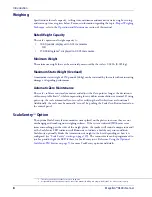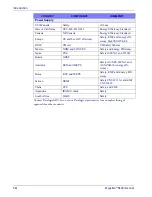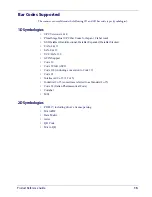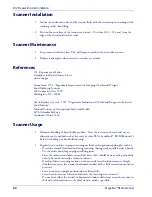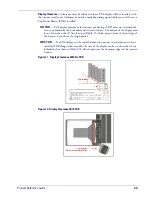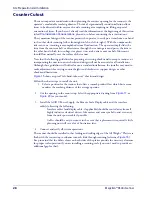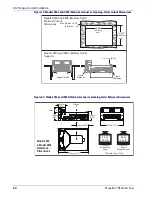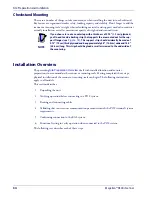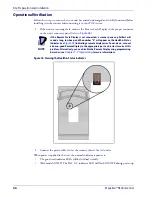
Product Reference Guide
21
Checkstand Design Recommendations
1. Select a design which allows load-sharing by several muscle groups (for example designs
which allow the cashier to use both hands for scanning and bagging).
2. Use a powered in-feed conveyor to help cashiers bring the items to their best work zone,
rather than leaning and reaching to get items further up the conveyor.
3. Select checkstands which deliver products to the cashier on an input belt and do not
require the unloading of items from a cart. These designs put less stress on the cashiers’
shoulders and back.
4. Minimize the distance between the input and take-away conveyors (i.e., the distance the
cashier has to reach to move the products).
5. Minimize the width of the input conveyor to reduce the cashier’s reach to items on the far
side of the belt; use a diverter or “sweeper” to direct products closer to the cashier.
6. Select a design which encourages the cashier to slide products across the scanner rather
than gripping and lifting. Make sure the horizontal surface of the scanner is flush with all
surrounding surfaces.
7. Choose a design which integrates the scanner and scale to eliminate extended reaches and
lifts during weighing tasks.
8. Place the conveyor belt electronic eye close to the scanner, but allow sufficient area
between the eye to ensure the belt does not push items in to the scanning field.
9. Locate commonly used items such as the cash drawer and printer within easy horizontal
reach.
10. Remove, round-off, or pad sharp or hard edges with which the cashier may come into
contact.
11. Provide an easily accessible bag stand at a height 13 - 17 inches (33 - 43.2 cm) lower than
the top surface of the checkstand to reduce stresses to the shoulders, elbows, and risks
associated with lifting products into bags.
12. Do not position the bag stand between the cashier and the scanner, due to the increased
reach involved.
13. Position the scanner’s horizontal scanning surface 34 - 36 inches (86.4 - 91.4 cm) above
the floor. Maintain a minimum of five inches (12.7 cm) clearance between elbows and
work surfaces.
14. Provide adjustable keyboard mounting (height, tilt, and horizontal reach).
15. Position the printer, cash drawer, and other checkstand devices the cashier uses within easy
reach (less than 18 inches/45.7 cm).
16. Provide adequate toe space (at least four inches), foot rests or rails, antifatigue mats, and
where feasible, an adjustable seat or stand against which the cashiers can lean.
Summary of Contents for Magellan 9800i
Page 1: ...MagellanTM 9800i Product Reference Guide...
Page 62: ...Site Preparation and Installation 50 Magellan 9800i Scanner NOTES...
Page 102: ...Calibration Procedures 90 Magellan 9800i Scanner NOTES...
Page 112: ...Programming 100 Magellan 9800i Scanner NOTES...
Page 158: ...Enter Exit Programming Mode 146 Magellan 9800i Scanner NOTES...
Page 174: ...EAS Features 162 Magellan 9800i Scanner NOTES...
Page 378: ...Enter Exit Programming Mode 366 Magellan 9800i Scanner NOTES...
Page 400: ...2D Symbology Programming 388 Magellan 9800i Scanner NOTES...
Page 414: ...402 Magellan 9800i Scanner NOTES...
Page 424: ...412 Magellan 9800i Scanner NOTES...
Page 438: ...426 Magellan 9800i Scanner NOTES...
Page 450: ...438 Magellan 9800i Scanner NOTES...


